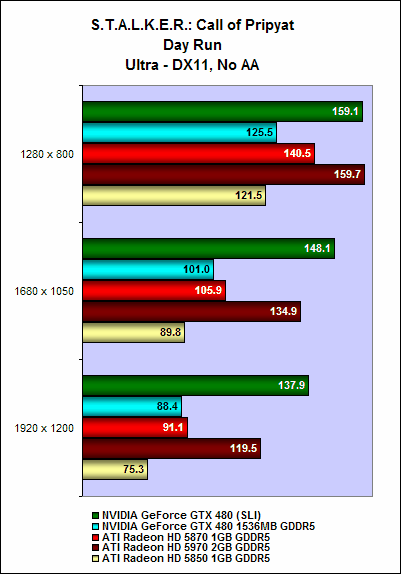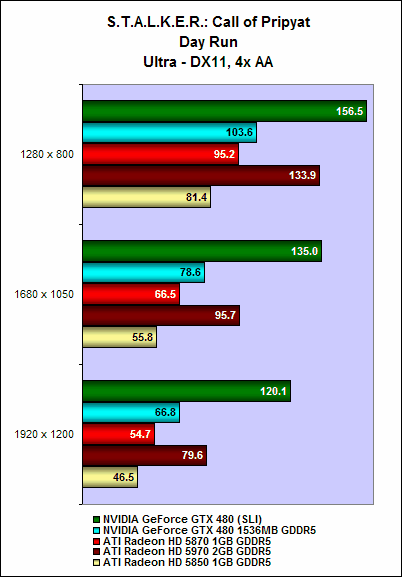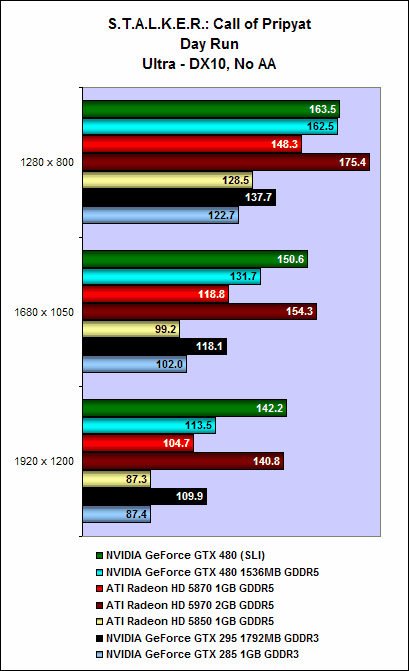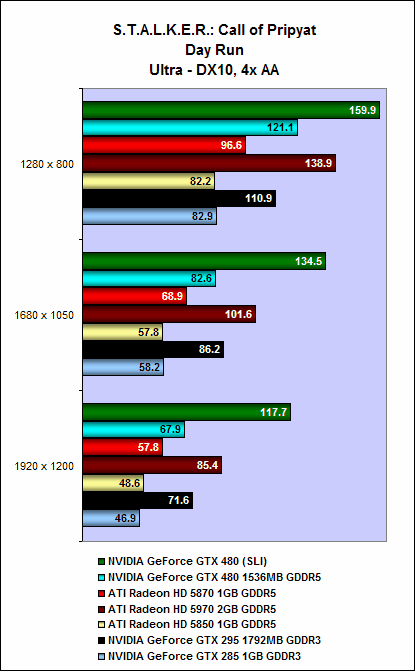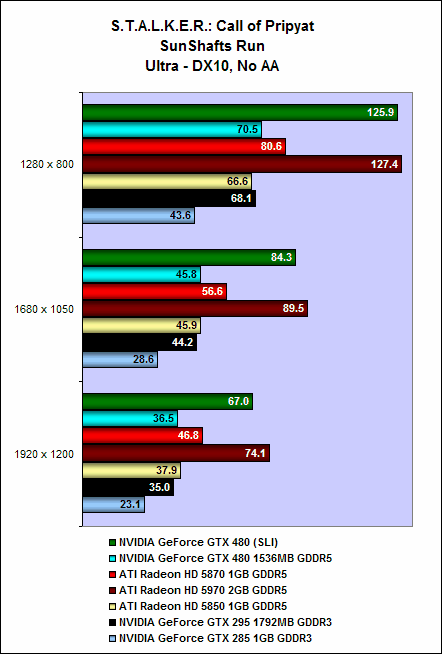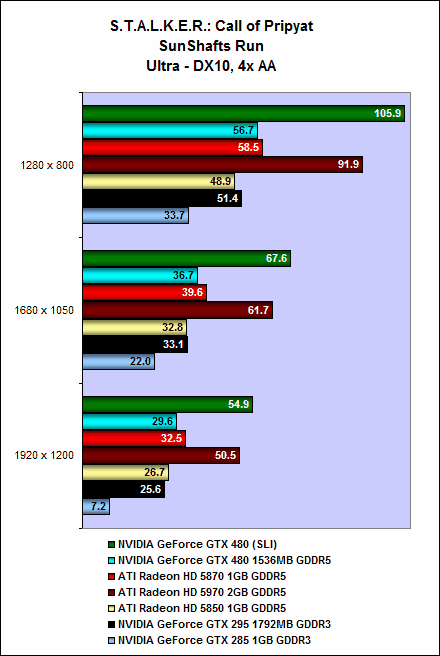GeForce GTX 480 SLI Performance Analysis
The GeForce GTX 480 is the undisputed fastest GPU in the world, but how would two in a SLI configuration perform? Check out our performance analysis to find out.
By Kenny Yeo -
The New Summit of Graphics Performance
Just last week, NVIDIA finally launched the long and eagerly awaited GeForce GTX 480. Powered by the GF100 chip that's based on the new Fermi architecture, it blitzed the opposition, easily and comfortably reclaiming the crown of world's fastest GPU from ATI.
However, reception to the card has been mixed, with most media (ourselves included) praising it for its blazing fast performance, but lamented that it's far too power hungry and hot to run.

Hold your horses and be prepared to be blown away by what should be the most dynamic pairing in graphics card history. However, it's not a setup for the faint hearted with its soaring operating temperatures.
In the meantime, NVIDIA has yet to make any comments regarding future releases based on the GF100 chip. But word on the street is that we can expect to see mainstream variants of the GF100 to arrive on store shelves around June. And if history is anything to go by, we should also see NVIDIA following in the footsteps of the GeForce GTX 295 and 9800 GX2, and create a monster card featuring twin GF100 chips in a dual-PCB card form factor – a GeForce GTX 495 perhaps?
Today, we put two GeForce GTX 480 cards setup in a SLI configuration to see just how a hypothetical GeForce GTX 495 would perform. Also, we wanted to test out NVIDIA claims about the new GF100 being more adept at performance scaling. In fact, NVIDIA proudly proclaims that the two GeForce GTX 480 cards can, in some instances, provide up to 95% in scaling performance. Loft claims but, you'll soon see that there's truth in it.
Other aspects that are of great interest is just how much power such a setup will draw, and seeing how hot a single GeForce GTX 480 runs, we also wanted to find just how bad can it get if two of them were running in a SLI configuration.
Test Setup
We'll be testing the cards on our new Intel X58 chipset based system which has the following specifications:
- Intel Core i7-975 (3.33GHz)
- Gigabyte GA-EX58-UD4P motherboard
- 3 x 1GB DDR3-1333 OCZ memory in triple channel mode
- Seagate 7200.10 200GB SATA hard drive
- Windows 7 Ultimate

How does 6.4 billion transistors, 960 CUDA cores, 3072MB of frame buffer, and over US$1000 worth of graphics processing power sound to you?
Apart from seeing how two GeForce GTX 480 cards will perform as opposed to one, we will also be looking closely at how it compares against the Radeon HD 5970, which is still holding on to its title of the world's fastest single graphics card. We'll are also curious to find out what power consumption readings and temperature readings will be like for such a high-end setup.
Considering two GeForce GTX 480 cards will cost nearly US$1000, we are expecting it to handily beat a single Radeon HD 5970, which costs a slightly more palatable US$599. Naturally, we are also curious how two Radeon HD 5970 cards in CrossFireX will match up against this dual GeForce GTX 480, but keeping in mind that two Radeon HD 5970 cards will come in at a whopping US$1200, we'll save such a comparison for the near future in a separate article. Perhaps one that is an all-out shootout featuring two Radeon HD 5970 cards in CrossFireX and dare we even mention it, 3-way GeForce GTX 480 SLI? Should be interesting. For now, we're clearly focused on the gains from taking the SLI route with the GeForce GTX 480.
In the meantime, this is the full list of cards and their driver versions used:
- 2 x NVIDIA GeForce GTX 480 in SLI (ForceWare 197.17 Beta)
- NVIDIA GeForce GTX 480 (ForceWare 197.17 Beta)
- NVIDIA GeForce GTX 295 (ForceWare 196.21)
- NVIDIA GeForce GTX 285 (ForceWare 196.21)
- ATI Radeon HD 5970 (Catalyst 10.2)
- ATI Radeon HD 5870 (Catalyst 10.2)
- ATI Radeon HD 5850 (Catalyst 10.2)
The list of benchmarks are as follows:
- Futuremark 3DMark Vantage
- Crysis Warhead
- Far Cry 2
- Warhammer: Dawn of War 2
- Battlefield Bad Company 2
- "Heaven" from Unigine
- S.T.A.L.K.E.R.: Call of Pripyat
3DMark Vantage

Crysis Warhead

Far Cry 2


Dawn of War 2

Bad Company 2

Unigine "Heaven"
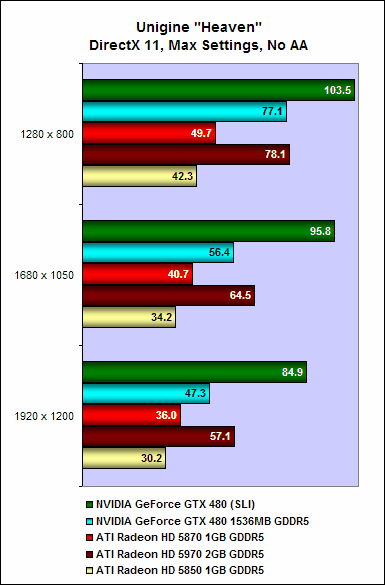 | 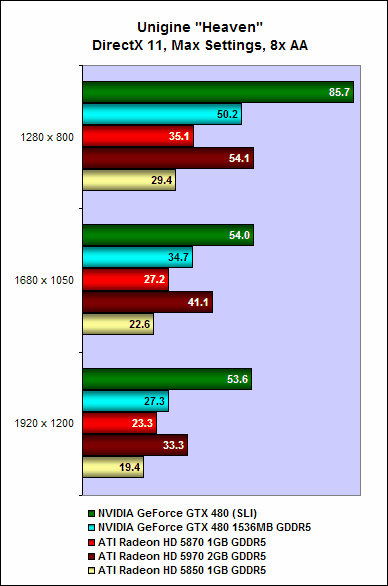 |
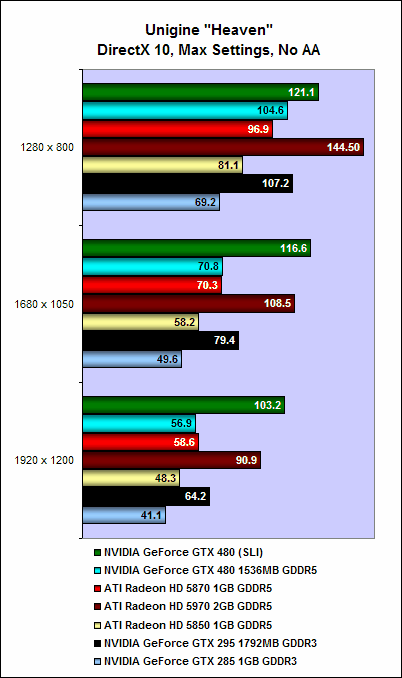 | 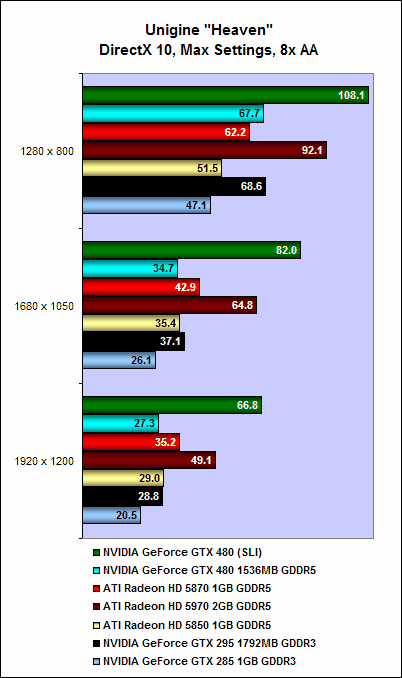 ; ; |
S.T.A.L.K.E.R.: Call of Pripyat
DirectX 11 Results
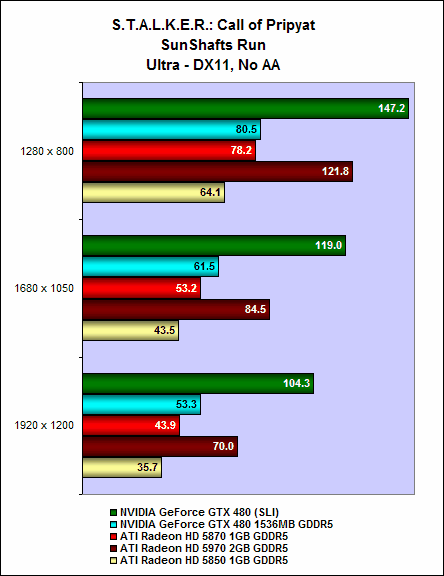 | 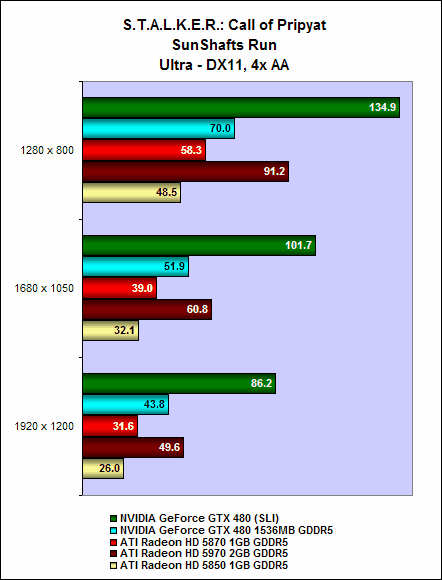 |
DirectX 10 Results
Temperature

Power Consumption

Extreme Performance for Extremists
The GeForce GTX 480 continues to amaze us with its sheer graphics crunching ability, along with its other not so desirable traits of high operating temperatures and power requirements.
NVIDIA's claim of improved SLI performance seems to be spot on, as we experienced substantial boost to performance, especially on the more demanding settings. Take Crysis Warhead for example, at 1920 x 1200 with 4x anti-aliasing enabled, a single GeForce GTX 480 managed 32.41fps; add another GeForce GTX 480, however, and performance takes a massive hike to 58.91fps, an over 80% increase in performance.
It is the same story with S.T.A.L.K.E.R.: Call of Pripyat. On the SunShafts Run, with DirectX 11, tessellation and 4x anti-aliasing enabled, a single GeForce GTX 480 could do only 43.8fps; but two GeForce GTX 480 cards in SLI could achieve a whopping 86.2fps, a whopping 96% increase in performance.
The GeForce GTX480 in SLI is also substantially faster than anything in ATI's stable. Even the Radeon HD 5970 could not cope with the sheer might of two GeForce GTX 480 cards, and if a dual-GPU "GeForce GTX 495" does come to fruition, it will surely, barring any major catastrophe, seize the title of fastest single graphics card from the Radeon HD 5970.

Not for the weak-hearted, in terms of performance and costs.
Despite the incredible performance, operating temperatures and power consumption are subjects of great concern. With two cards running at a whopping 95 degrees Celsius at the core, ambient heat emitted by the cards is significant and therefore a super ventilated casing is a must-have. In fact, we recommend that such a setup be run in a fairly well air-conditioned room just to be on the safe side. Taking into account just how hot two cards in SLI already is, we shudder to wonder just how anyone will cope with a 3-way GeForce GTX 480 SLI setup. Remember, with a 3-way SLI setup, the cards will be running side by side on the motherboard with little space between them. We figure such a setup would require nothing less than an icebox to keep them going.
On top of that, another pressing issue is that of sound. A system with a single GeForce GTX 480 is already a fairly noisy setup, and with two here, the noise was almost unbearable, to the point where it can and will distract users. Users who are keen on such an SLI setup should also seriously consider getting a pair of good headphones to isolate yourselves from the incessant whirring of fans. Alternatively, consider isolating the main PC and just keep the input peripherals and monitor near you.
Lastly, power consumption figures borders on the ridiculous. A similar specced system with two Radeon HD 5970 cards in CrossFireX is less power hungry than this - and that's four GPUs! As such, an adequate PSU is also crucial to keep the system running smoothly. However, power requirements are the least of your concerns seeing the widespread availability of powerful PSUs. We recommend nothing less than a high-end 850W PSU or if you can, go for one that is 1000W and above to give you more headroom for future expansion.
Bashing aside and if you're not counting the number of active GPUs, we would like to draw your attention to the older Radeon HD 4870 X2. While fast in its day, it was also a power guzzler and quite a heat radiator - enough to challenge the GeForce GTX 480. In one of our articles last year (page 8 to be exact), we've even run the Radeon HD 4870 X2 in CrossFireX mode, only to record our highest ever power draw for any setup to-date and was almost as warm as the GeForce GTX 480 in SLI too. Having said that, we're just drawing comparisons where extremes are concerned that the alarming power and thermal stats of the new GeForce GTX 480 aren't exactly unheard of.
In closing, it seems that NVIDIA has done a commendable job on improving the SLI performance of their latest generation cards, as there is evidence to suggest that performance scales nicely, especially when it is most needed at demanding settings. However, the combined might of two GeForce GTX 480 cards in SLI configuration is overkill for most users, and considering the daunting costs involved in acquiring and maintaining such a setup, it is something that is certainly reserved for the hardcore extremists.
Looking ahead, we hope to address the question that is on many a hardcore user's mind, and that is which is quicker: 3-way GeForce GTX 480 SLI, or dual Radeon HD 5970s in CrossFireX? Check back in then.
Our articles may contain affiliate links. If you buy through these links, we may earn a small commission.
